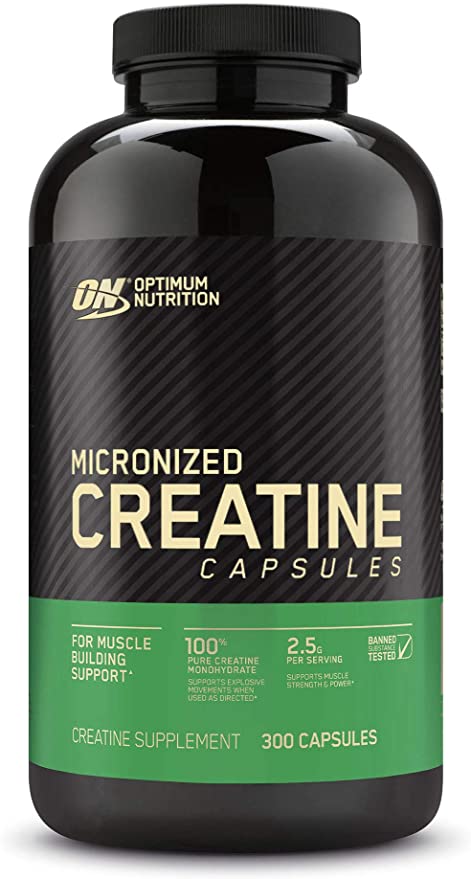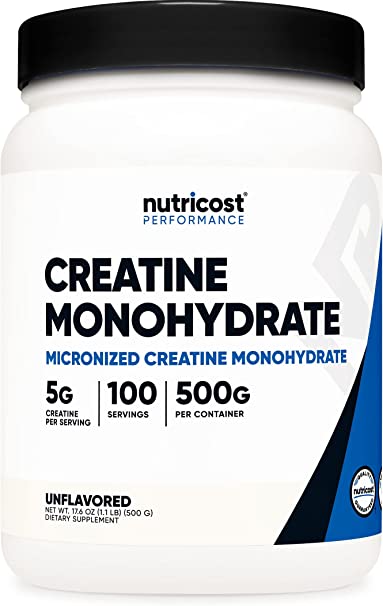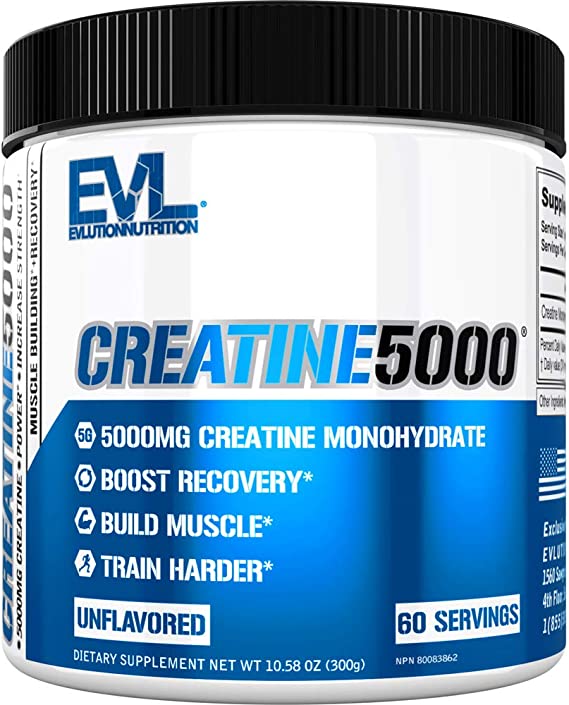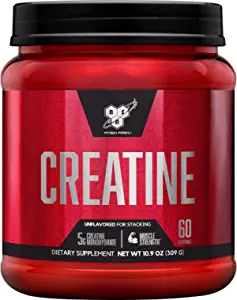Creatine: What is it?
The body naturally contains the substance creatine, which is mostly found in muscle cells. Additionally, it can be found in some meals including fish and red meat. By giving your muscles more energy, creatine enables you to exert yourself more forcefully during strenuous physical exercises like weightlifting or sprinting. Creatine is a nutritional supplement that has grown in popularity recently for its ability to boost athletic performance, encourage muscular growth, and increase cognitive function.
The role of creatine in the body
Amino acids like glycine, arginine, and methionine are used by our bodies to make creatine. It is subsequently stored as creatine phosphate in skeletal muscle, where it contributes to the production of adenosine triphosphate (ATP), the main fuel for muscular contractions. Creatine enhances muscle function, endurance, and recovery by expanding the ATP pool. Additionally, given that the brain similarly uses ATP as energy, some study suggests creatine may have advantageous impacts on brain function.
Advantages of Creatine
Sports Performance
One of the most well-known benefits of creatine supplementation is its ability to enhance sports performance. Studies have shown that creatine can increase power output, strength, and muscle endurance, making it a valuable supplement for athletes participating in high-intensity activities like weightlifting, sprinting, or other explosive sports.
Muscle Development
Creatine supplementation can also promote muscle growth by increasing the water content in muscle cells, leading to cell volumization. This process can stimulate protein synthesis and ultimately contribute to muscle hypertrophy. Additionally, creatine has been shown to increase satellite cell activity, which plays a crucial role in muscle repair and growth.
Cognitive Benefits
Emerging research indicates that creatine may have cognitive benefits as well. Creatine has been shown to improve working memory and cognitive processing, particularly in tasks that require short-term memory and quick thinking. This could be especially beneficial for individuals with naturally low creatine levels, such as vegetarians and vegans.

Disadvantages of creatine
Safety Issues
Although most people typically consider creatine to be safe, there are some safety issues to be aware of. Muscle cramping, renal problems, and gastrointestinal irritation can all result from taking too much creatine. It’s critical to adhere to suggested amounts and get medical advice before beginning any supplements program.
Changes in Weight
Due to increased water retention in muscle cells brought on by creatine supplementation, some people may experience weight gain.
It’s important to realize that this weight gain is primarily the result of increased muscle mass and water content rather than fat accumulation, which can be mistaken as fat growth. However, while taking creatine supplements, this element needs to be taken into account for athletes competing in weight-class sports or those trying to maintain a certain weight.

Supplementation Guide for Creatine
Recommendations for Intake
Depending on personal characteristics including body weight, muscle mass, and amount of physical activity, the ideal creatine dosage may change. A typical recommendation is to begin with a loading phase of 20 grams divided into four doses of 5 grams per day for 5-7 days. A maintenance dose of 3-5 grams per day is advised to maintain increased creatine levels after the loading period.
Types and Subtypes
The most popular type of creatine is creatine monohydrate, though it can be found in other forms as well. Other types of creatine include buffered creatine, creatine hydrochloride, and creatine ethyl ester. Even though some producers assert that their particular kind of creatine has better absorption or effectiveness, studies have shown that creatine monohydrate is both efficient and generally well-tolerated.
Effects of Creatine Monohydrate
The form of creatine that has been the subject of the greatest research and usage is creatine monohydrate. It has been demonstrated to be successful at raising muscle creatine levels, boosting athletic performance, and encouraging muscular growth. Additionally, creatine monohydrate is inexpensive and has a good safety record.
Cycling and Loading
Creatine supplementation’s loading phase is intended to boost muscle creatine reserves quickly. To keep elevated creatine levels after the loading phase, a reduced maintenance dose is employed. Some people like to cycle creatine, using it for a while (for example, 8–12 weeks) and then taking a vacation. However, research has not discovered any notable benefits of creatine cycling over constant dosage.
Adequate hydration
When using creatine supplements, it’s important to stay well hydrated because failing to do so increases the risk of cramping and gastrointestinal problems. It is typically advised to drink at least 8 to 10 cups of water per day while taking creatine supplements.

Creatine Options for Vegetarians and Vegans
Vegetarians and vegans typically have lower creatine levels than omnivores, as creatine is primarily found in animal-based foods. Fortunately, there are plant-based creatine supplements available that cater to individuals following a vegetarian or vegan diet. It’s essential to choose a reputable brand and ensure the product is free from animal-derived ingredients.

Creatine and Workout Recovery
Creatine can also play a role in workout recovery by reducing muscle damage and inflammation, promoting muscle repair, and replenishing energy stores. By supplementing with creatine, individuals may experience faster recovery times and be better prepared for their next training session.

Conclusion
Creatine is a powerful and well-researched supplement that can provide numerous benefits, including enhanced sports performance, muscle development, and cognitive function. However, it’s essential to be aware of potential drawbacks and follow proper supplementation guidelines to maximize benefits and minimize risks. With this comprehensive guide, you’ll be well-equipped to make an informed decision about incorporating creatine into your fitness regimen.
FAQs
- Is creatine safe to use long-term? Creatine is generally considered safe for long-term use when taken within recommended dosages. However, it’s always best to consult with a healthcare professional before starting any supplementation regimen.
- Can I take creatine without doing the loading phase? Yes, you can skip the loading phase and start with a maintenance dose of 3-5 grams per day. However, it may take longer to reach optimal muscle creatine levels without the loading phase.
- Is creatine only for athletes or bodybuilders? While creatine is popular among athletes and bodybuilders, its benefits can extend to individuals engaging in various types of physical activity. Moreover, its cognitive benefits may be helpful for individuals who do not participate in sports or resistance training.
- How soon will I see results from creatine supplementation? The time frame to see results may vary depending on individual factors, but generally, noticeable improvements in strength, power, and muscle mass can be observed within a few weeks of consistent supplementation.
- Should I take creatine with carbohydrates or protein? While some studies have shown that taking creatine with carbohydrates or protein may enhance its absorption, it’s not necessary for effectiveness. You can take creatine with water or mix it into your favorite beverage.


